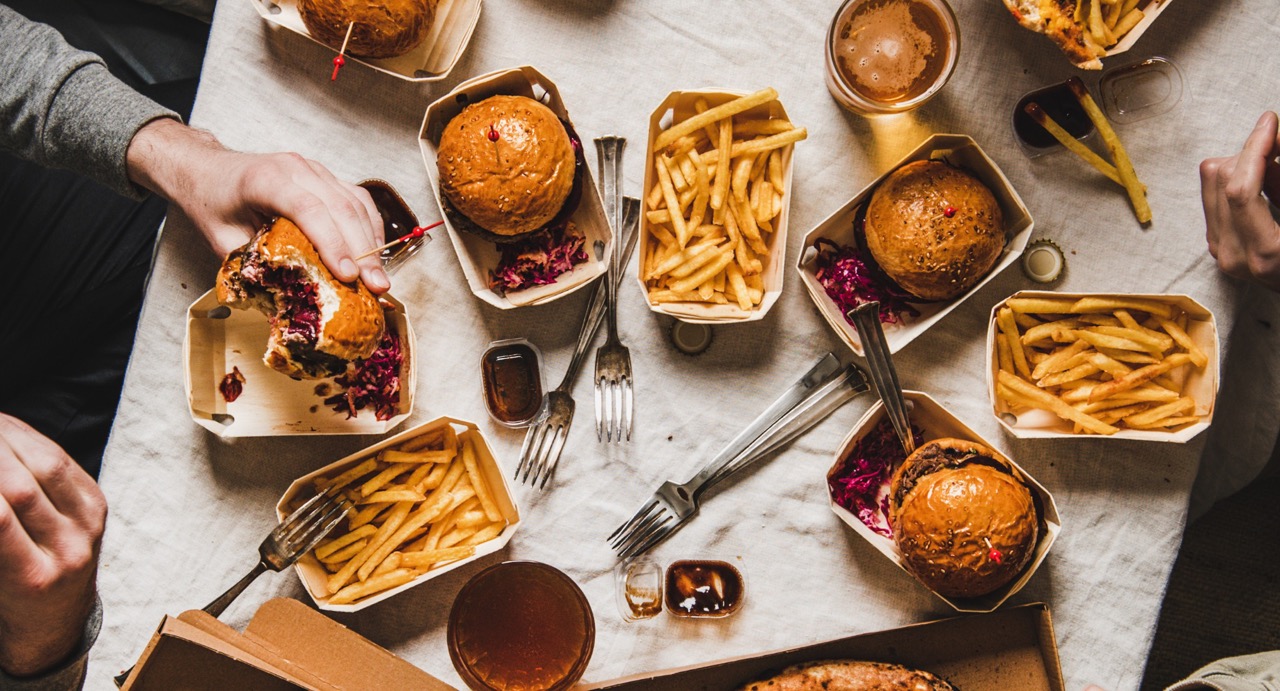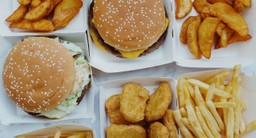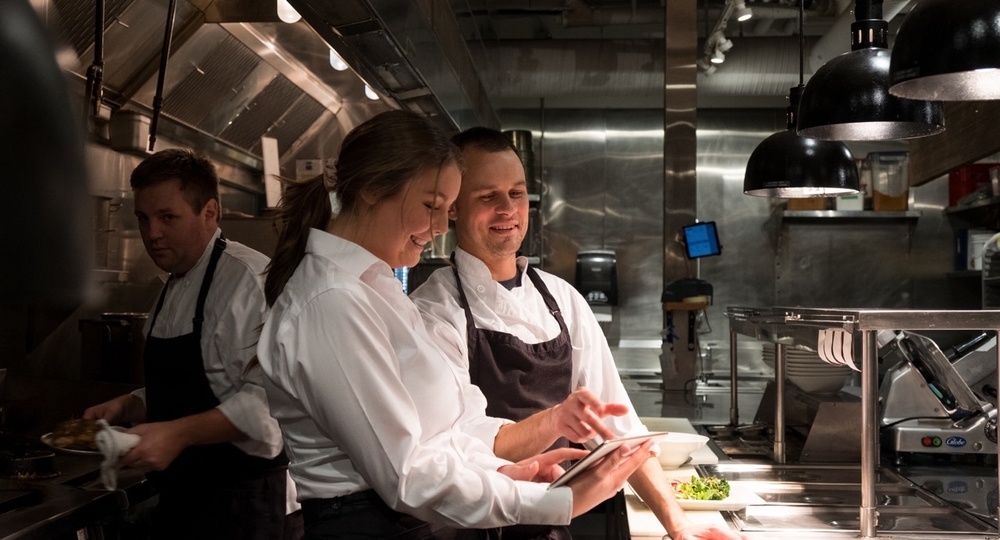Table of Contents

With the rise of quick dining options, it can be difficult to place your restaurant in a category. From multiplying fast-casual options to delivery-friendly fine dining, the lines between restaurant “types” are more blurred than ever.
You might be wondering, in the context of quick-service dining, what is QSR? QSRs, or quick-service restaurants, are the most common type of classic fast-food restaurants, and they’re experiencing both a steady incline in popularity and a major upgrade in technology to meet the growing demands of today’s busy eaters.
What is a QSR?
The term “QSR” refers to a “quick-service restaurant,” an industry synonym for “fast-food restaurant.”
However, while the term “fast-food” calls to mind traditional options like McDonald’s and Burger King, the term “QSR” encompasses a wider variety of restaurants, including franchises like Dunkin’ Donuts, Chipotle, Domino’s, and Boston Market.
Any restaurant offering a limited, focused menu of inexpensive meals (typically $10 or less) in a casual setting is considered a QSR (meaning an infinite number of restaurant ideas can fit the QSR mold. QSR meals are often packaged to-go, and dining room seating is limited. Service is fast—even faster than a “fast-casual” restaurant like Panera, Shake Shack, or Five Guys.
While fast-casual restaurants require guests to wait 5 to 10 minutes for their food and encourage them to dine in, QSRs serve food almost immediately and often offer drive-thrus.
But the QSR concept is nothing new.
QSRs have been a crucial piece of the American restaurant industry for decades. Over a quarter of American adults eat a fast-food meal daily, and value its price and convenience amidst a busy work week. Over 20% of American meals are eaten in cars, a concept that would’ve been unheard of before fast food. The QSR industry is alive and well, and demand doesn’t show signs of declining any time soon.
Current QSR trends & future outlook
The typical American family spends $1,200 on fast food annually, and the entire American population spends upwards of $50 billion on fast food each year. While the QSR industry remains a giant in 2024, there are a few incoming trends to look out for.
Dual-brand establishments are on the rise, meaning we’ll be seeing more “Dunkin’ Donuts/Baskin Robbins” and “KFC/Pizza Hut/Taco Bell” type places on the market. This strategy boosts convenience and cuts back on choice paralysis for consumers, while minimizing labor costs for brands.
Technology will be further ingrained into the fast-food experience, with added features like voice-to-text ordering, AI-generated time estimates for orders, and even robot cooks.
In the wake of COVID, dining in is on the decline, and we’re likely to see even smaller capacity dining rooms in favor of drive-thru and delivery options.
Finally, hyper-personalization is in, with the ability to personalize menu items and adjust pricing accordingly.
Key components of QSRs
When it comes to QSRs, there are a few hallmark features that keep customers coming back. Below are some of the most common factors that keep Americans coming back to fast-food establishments.
#1 Speed of service
Speed of service is a crucial benefit of QSRs for consumers. When your food is ready by the time your car is through the drive-thru, you’re able to save time on grocery shopping, cooking, cleaning, and even deciding what to eat.
#2 Menu simplicity
Menu simplicity keeps customers coming back for their favorite meals (made the same way every time), further cutting down on decision paralysis. Moreover, a simple menu makes training employees easier and even allows for exciting limited edition specials, like the famous “McRib.”
#3 Cost efficiency
It’s hard to beat the QSR model when it comes to cost efficiency. QSRs are inexpensive to operate and can offer cheap meals to consumers while still maximizing profits. Cost efficiency is only growing with the introduction of new technologies and the decreasing need to maintain large dining rooms.
Challenges of QSRs and how to face them
Despite the many advantages of QSRs for both business owners and consumers, owning a QSR doesn’t come without challenges.
One study showed that the impact of COVID regulations has had a major impact on the success of QSRs, along with the subsequent boom in home delivery from all types of restaurants. It’s tough to compete when consumers can have high-quality meals from any type of restaurant delivered to their door, and are more motivated to support small businesses. QSRs are working to combat this issue by expanding their menus and conforming to pickup-and-delivery/mobile ordering trends.
Retaining and training new employees in the often low-paying fast-food industry can be another challenge for many QSRs, and unreliable equipment can affect efficiency as well as food safety. It’s important to offer adequate hourly rates and benefits (like Starbucks’ tuition coverage program) and to invest in high-quality equipment and test it regularly.
The role of technology in QSRs
Digital ordering for pickup and delivery has seen a massive spike in recent years, with the advent of new technology and in the wake of the pandemic. The food delivery market has more than tripled since 2017.
Consumers now have even more options than the traditional “dine-in or drive-thru,” with mobile ordering apps for nearly every fast-food restaurant, third-party delivery platforms, and even touch-screen order kiosks.
Technology is even integrated into the food preparation and service process itself, with the aforementioned robotics, AI time estimate systems, and voice-to-text ordering machines. Due to the uniform nature of QSR meals and the in-and-out nature of fast-food service, it’s possible to incorporate technology at every stage of the meal. As a result, QSRs have become the technology pioneers of the restaurant industry in recent decades.
Enhance your QSR with CloudKitchens
If you’re looking to enhance the efficiency and profitability of your QSR, look no further than CloudKitchens. By renting a CloudKitchens ghost kitchen (already equipped with the essentials), you can fulfill delivery orders from a variety of order platforms via a single tablet.
All you have to do is staff your back-of-house, get cooking, and let CloudKitchens do the rest. CloudKitchens allows you to embrace new technology and deliver your delicious food to more customers.
Maybe your food truck is used for pop-up events, or you only operate seasonally. No matter your niche, there are many advantages to renting or leasing a food truck.
We have locations all over the US, so if you need a commercial kitchen in Austin or a commercial kitchen in Miami, we are ready to support your culinary endeavors. Find the CloudKitchens location nearest you and start expanding your food business!
Explore ghost kitchen locations across the US:
- Ghost kitchens in Seattle
- Ghost kitchens in San Francisco
- Ghost kitchens in LA
- Ghost kitchens in NYC
- Ghost Kitchens in Toronto
- Ghost Kitchens in Atlanta
- Ghost Kitchens in Dallas
- Ghost Kitchens in Chicago
- Ghost Kitchens in Denver
- Ghost Kitchens in Miami
| DISCLAIMER: This information is provided for general informational purposes only and the content does not constitute an endorsement. CloudKitchens does not warrant the accuracy or completeness of any information, text, images/graphics, links, or other content contained within the blog content. We recommend that you consult with financial, legal, and business professionals for advice specific to your situation. |
Sources:
QSR Magazine. Quick Service Versus Fast Casual: Where’s the Distinction? https://www.qsrmagazine.com/growth/consumer-trends/quick-service-versus-fast-casual-wheres-distinction/
Colby College. America’s Fast Food Obsession. https://web.colby.edu/st297-global18/2018/10/29/americas-fast-food-obsession/
QSR Magazine. 22 Fast-Food Trends to Watch in 2023. https://www.qsrmagazine.com/slideshow/22-fast-food-trends-watch-2023/
National Sanitation Foundation (UK). Survey Says: It’s Time for Change in Quick Service Restaurant Operations. https://www.nsf.org/gb/en/news/change-quick-service-restaurant-operations
Starbucks. Education: Starbucks Coffee Company. https://www.starbucks.com/careers/working-at-starbucks/education/
McKinsey & Company. Ordering in: The Rapid Evolution of Food Delivery. https://www.mckinsey.com/industries/technology-media-and-telecommunications/our-insights/ordering-in-the-rapid-evolution-of-food-delivery
More insights & stories


